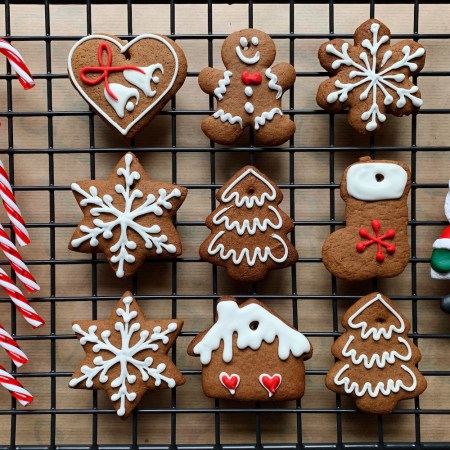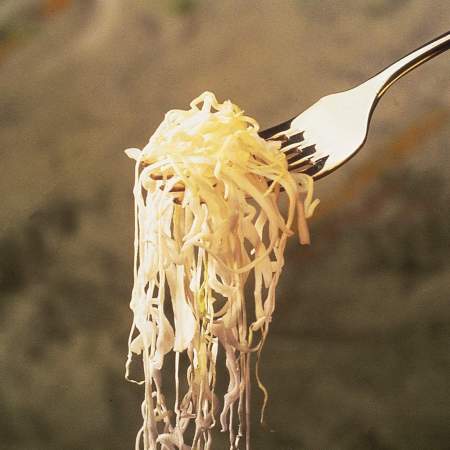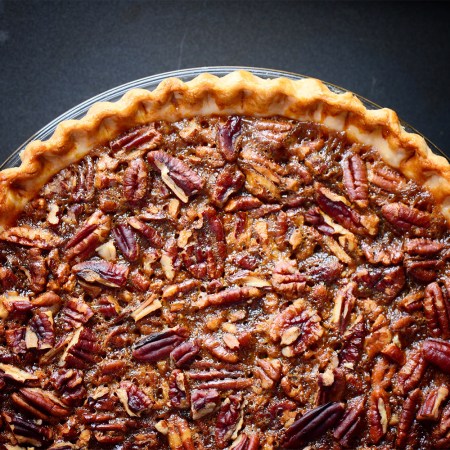In 1957, Wisconsin man Sverre S. Elsmo composed a tune that was played and recorded by accordionist Frankie ”Polka King” Yankovic, whose picture appears on the cover of the sheet music that is now housed in the archives at the University of Wisconsin-Madison. Elsmo’s diddy, the ”Kringleville Polka,” is an homage to his hometown of Racine and pays tribute to the small industrial city’s signature pastry: the kringle.
If you’ve never heard of the pastry that Racine’s Denmark-influenced bakeries produce year-round (but at a substantially higher volume during the holidays), you are not alone. There are residents of Milwaukee, about 25 miles north, who’ve never heard of a kringle.
Kringles are traditionally large, flat, pretzel-shaped (kringle is the Danish word for pretzel) or ovals of dough that are stuffed with sweet or fruity fillings and topped with a sugary coating. Racine’s kringles were originally made in the shape of pretzels by the multitudes of Danes who came to live in the city, but recipes were altered more than 50 years ago to the oval shape that’s baked today, by establishments such as O&H Bakery, to meet the demand of customers.

“When kringles started to gain popularity in the ’50s, the shape changed from a pretzel — which is what you’ll find in Europe — to an oval,” O&H Bakery marketing VP Matt Horton tells InsideHook. “It became standard here in Racine. The bakers did this because their customers really loved the fillings and they wanted more of them. Pretzels have more overlapping points, which means more pastry and less filling. Because the oval only has one overlap, they could get more filling into every kringle. Our bakeries started making ovals, and we’ve celebrated it ever since.”
Named the official state pastry of Wisconsin in 2013, kringles made with O&H’s recipe are meant to be light and tender. They undergo a two-day process that calls for the dough to be rolled in butter and left overnight to marinate and soften. When the kringle is finally ready to be rolled, stuffed and baked on the third day, the pastry’s 36 layers of butter provide a melt-in-the-mouth feel with every bite.
“Every kringle has 18 pairs of dough and butter on top and 18 on the bottom,” Horton says. “It gives you this buttery, flaky, light texture. The closest thing you could probably compare it to would be a croissant, even though it’s thinner. It’s a bit richer, but it is along those lines. The scratch-made fillings we use add a different profile, though.”
Available with filling flavors including almond, cherry, pecan, raspberry, wild blueberry, cheesecake and apple, O&H’s kringles are available throughout the year but are especially popular in the cold winter months of the holiday season.
“This time of year is our peak by far,” Horton says. “We make around 7,000 kringles a day just to handle the demand we get. That’s what we’re known for. It’s a unique item that becomes a tradition because family members always want to share it with the next person after they try it. You can’t get it everywhere, so we work nonstop to satisfy our customers during the holidays.”
Feeling the holiday spirit? Fix yourself a Wisconsin Old Fashioned and indulge in some light, flaky, flavorful reading.
Bakers note: The best quality kringle requires patience. This process is most successful when spread out over the course of three days. A quality Danish pastry should be light, tender, flaky and full of flavor. With patience and pride, this recipe will yield just that.
Day 1, roll in the first piece of butter.
Day 2, roll in the second piece of butter and additional fold.
Day 3, create your kringle or other fine Danish pastries.
O&H Bakery’s Butterscotch Kringle Recipe
Prep Time: 3 days, 1 hour
Cook Time: 25 minutes
Total Time: 3 days, 85 minutes
Servings: 2 kringles
Ingredients
- 3/4 cup butter
- 1 package dry yeast
- 1/4 cup lukewarm water
- 1/4 cup lukewarm milk
- 1/4 cup sugar
- 1/2 tsp. salt
- 1/2 tsp. lemon extract
- 1 egg
- 2 cups sifted all-purpose flour
- 1 cup brown sugar
- 1/3 cup butter
- Pinch salt
- Pinch cinnamon
- 1 to 2 egg whites
- Choice of fruit, nuts, raisins or jam
Directions
-
For the kringles and sauce
-
Soften butter with a potato masher or something similar. Spread the butter on waxed paper to an 8-by-16-inch rectangle. Chill.
-
Dissolve yeast in warm water. Add milk, sugar, salt, lemon extract and egg, and mix well. Add flour and mix it smooth by hand. A nice dough should be formed. Wrap with plastic wrap and chill.
-
Roll the dough on a well-floured board into an 8-by-12-inch rectangle. Divide the prepared butter layer into 2 equal parts. Place 1 piece of the butter on 2/3 of the dough. Fold the uncovered third of dough over the middle third (on top of 1/2 of the butter layer), then fold the remaining third over the top. Chill.
-
Roll the dough again into an 8-by-12-inch rectangle. Place the remaining piece of chilled butter on 2/3 of the dough. Fold in the same method as the first piece of butter.
-
Gently roll the dough to an 8-by-16-inch rectangle being careful not to break the layering of butter. Fold like above in thirds. This makes 24 layers of butter. Chill.
-
Cut the dough into 2 equal pieces. Lightly and patiently roll 1 piece at a time, until each piece is about 6 by 20 inches.
-
To prepare the filling, mix brown sugar, 1/3 cup butter, pinches of salt and cinnamon, and 1-2 egg whites until smooth. Spread the center third of the dough with butterscotch filling, then add fruit, nuts, raisins or jam. Fold one of the long edges to the middle, moisten the other edge and fold over top to cover the filling. Seal well.
-
Put the kringle on a lightly greased baking sheet and form into an oval shape, pressing the ends of the kringle together to form a continuous oval. Flatten the entire oval with your hands. Cover the kringle for 1 hour at room temperature.
-
Preheat the oven to 350 degrees, then bake for about 20 to 25 minutes until golden brown color. Cool, then ice with a mixture of powdered sugar and water.
-
This article was featured in the InsideHook newsletter. Sign up now.























